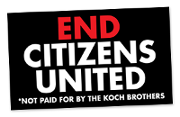Biblio
Filters: First Letter Of Last Name is R [Clear All Filters]
(2012). Victory Secrets of Attila the Hun.
159. Abstract
"An organization's worst enemies are seldom external. Rather, the most deadly and damaging threats come from those who are so driven toward power that their political maneuvering can destroy the very group in which they seek authority." (p. 44)
(2008). Just Enough Anxiety: the hidden driver of business success.
"Compassionate leaders assume goodwill. They respect and see the good in others, and in themselves. They honor people's feelings as true for them. And they try to minimize people's pain and fear while maximizing their sense of well-being. In the words of George Washington Carver: 'How far you go in life depends on your being tender with the young, compassionate with the aged, sympathetic with the striving, and tolerant of the weak and strong. Because someday in life you will have been all of these.'" (p. 84)
(2008). Why Work Sucks and How to Fix It: No Schedules, No Meetings, No Joke–the Simple Change That Can Make Your Job Terrific.
"You're stuck in a cube with a desktop computer and a phone with a cord so you can be there in person should your manager walk over to check up on whether or not you're working. The game becomes looking busy instead of working hard and solving problems and contributing. It's a game no one wins. You lose your freedom, your motivation, your soul, and in exchange for control over your life, your company gets little more than a show of work." (p. 28)
(2008). Dojo: The Definitive Guide.
(2007). RESTful Web Services.
(2006). Vital Friends: the people you can't afford to live without.
"Undoubtedly, there are thousands of managers in the workplace who have no business bearing the responsibility for developing other people. Most of us have had a boss like this at one point or another. They make you miserable, less productive, and even diminish your physical health. But we have also found thousands of exceptional managers who have the opposite effect, and they have something in common: These great managers care about each of their employees as a real human being, not just a means to an end." (p. 63)
(2005). An introduction to group work practice.
"The scapegoat, for example, receives much negative attention and criticism from the group because the member is blamed for a host of defects and problems. According to Schulman (1999), members attack the portion of a scapegoat's behavior that they least like about themselves." (p. 235)
(2003). Breathing For A Living.
"A team is a team because of their spirit, not always because they play perfectly together all the time." (p. 189)
(2003). Work to Live.
"We fear the silence of time not filled, the questions and self-judgment that may come up when we're not completely consumed with work or other distractions. Yet it's precisely the ability to stop and still your mind long enough to figure out what you need in life and whether your current course is getting you there that allows you to reach your goals. It frees you from the external noise to find out what a meaningful life is for you. Otherwise, you're running blind on somebody else's track, where busyness and productivity substitute for what's missing inside, peace of mind, which can only be generated within that same mind." (p. 141)
(2002). No-Collar: The Humane Workplace and Its Hidden Costs.
"'For the walking wounded among the great many of us', Terkel asserted, 'the blue collar blues is no more bitterly sung than the white collar moan.'" (p. 6)
(2002). Java Web Services Unleashed.
(2002). Mac OS X for Unix Geeks.
(2001). Weaving complexity and business: engaging the soul at work.
356. Abstract
"How then do we begin to generate caring and connected relationships at work? We begin with awareness. We begin by being aware of the world of relationships and by paying as much attention to these micro dynamics in organizations—how they influence social processes and psychological health of individuals—as we currently do to macro issues, such as economic performance and strategies." (p. 305)
(2001). Mac OS X Unleashed.
(2000). Andy Grove to CDU: Why Are You Looking at Me?.
Fast Company. Abstract
"This false notion suggests that you get better outcomes by eliminating the weaker member of a group. That is supported by another Darwinian misreading: Only the strong survive, and the outcome will be better if you have people of first-rate strength. These assumptions have become the foundation of growth, progress, and capitalism: stronger, better, more. But they are not part of Darwinism. Darwin's insight was that competition can lead to all sorts of new ecological niches. If predators are devouring animals (like you) during the day, you might become nocturnal. If predators are becoming stronger or larger, you could become smaller, more mobile, or less visible. There is nothing vengeful or vindictive about Darwinian theory. Invoking Darwin to justify cutthroat behaviors is wrong."
(2000). Linux System Commands.
(1999). Vampires: Emotional Predators Who Want to Suck the Life Out of You.
"One main tenet of emotional vampirism is particularly true in the workplace: ...while the victim is devoting the bulk of his time and energy to getting a job done, the emotional vampire is busy maneuvering." (p. 114)
"Actually dangerous (AD) emotional vampirism in the workplace is likely in situations which are highly charged emotionally, such as...when a career is at stake, and the actually dangerous is in a position to make or break an underling.
These are among the most difficult of situations, with material and emotional factors compounding each other." (p. 139)
"Actually dangerous (AD) emotional vampirism in the workplace is likely in situations which are highly charged emotionally, such as...when a career is at stake, and the actually dangerous is in a position to make or break an underling.
These are among the most difficult of situations, with material and emotional factors compounding each other." (p. 139)
(1999). Breakthrough Inc. : High Growth Strategies for Entreneurial Organizations.
"Conversation is the most powerful peacetime business and organizational tool ever devised....While others stress the word communication, to us the word conversation is the better approach for two reasons. First, communication, as the word is normally used in everyday life, is usually one-sided. Second, conversation implies an exchange of views, or as Julio Olalla says, 'a changing together'. Third, communication focuses on the act of getting an already designed and known message out, while conversation implies two or more people jointly seeking some knowledge, truth, or strategy that they individually have not figured out entirely." (p. 153)
(C)2014 CC-BY-NC 3.0, workcreatively.org











 ]
]